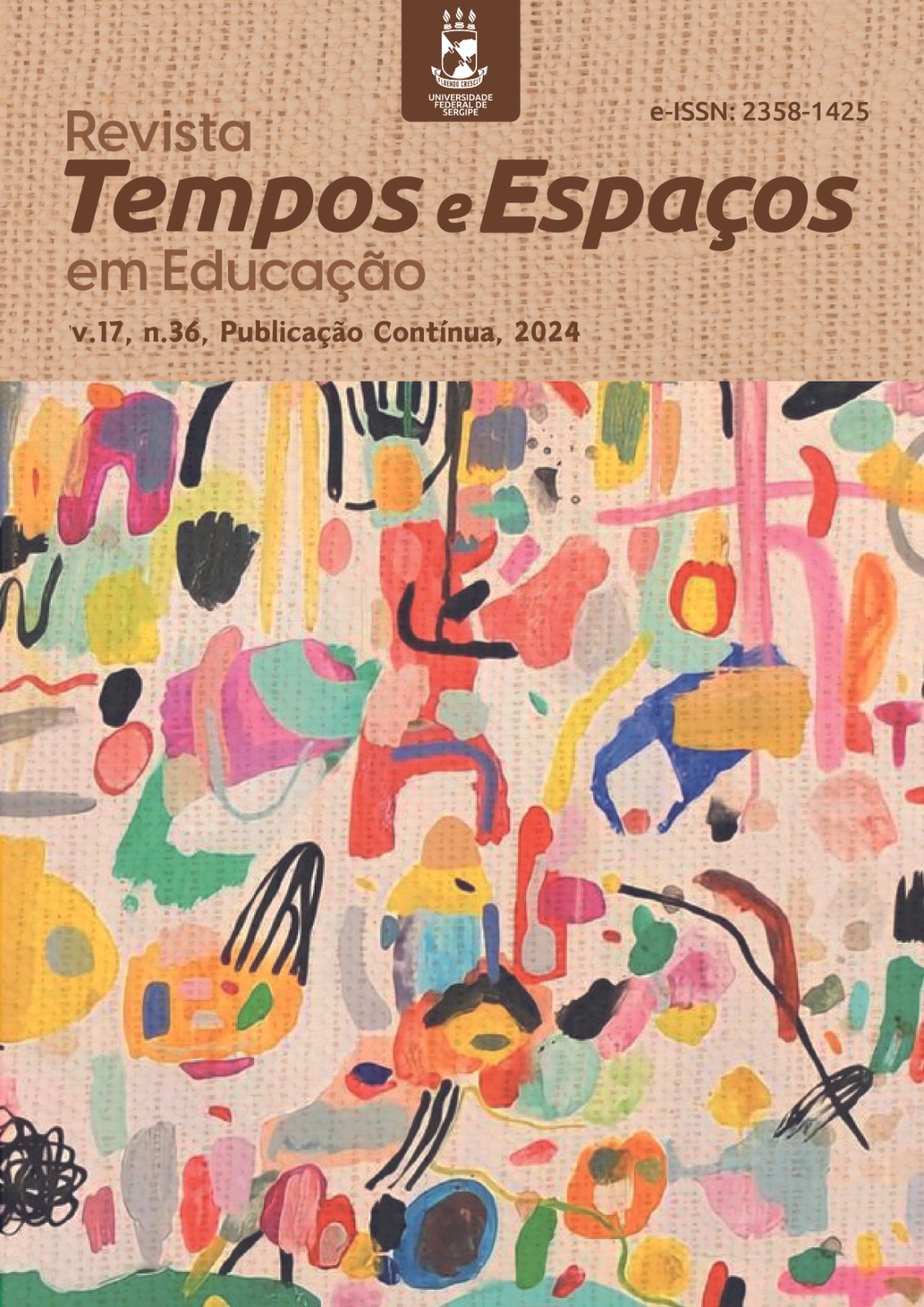Bejú material culture and curriculum proposition in early childhood education in the bragantina Amazon, state of Pará, Brazil
DOI:
https://doi.org/10.20952/revtee.v17i36.19866Keywords:
Cultural artifacts. Curriculum in Early Childhood Education. History of Education.Abstract
This article aimed to discuss the material culture of Bejú and the fabric of the Early Childhood Education curriculum. Methodologically, the New Cultural History Approach was used and the data analysis was operated by the ways of doing in Certeau (2014). The results show the material culture of bejú through the following objects: cassava; the machete; the machete; the wheelbarrow; the buckets; the canoe; the catitu; the drain; the pan; the tipiti; the Sari; the Sieve; the oven; the squeegee; the basketball; and sororoca leaves. Thus, based on the results, it is a fact that the proposition of the Early Childhood Education curriculum, is mediated through teaching practices of storytelling; conversation wheels; paintings; games; drawings stimulate the imagination of children in the Bragantina Amazon, State of Pará, Brazil.
Downloads
References
Base Nacional Comum Curricular (2018). MEC.
Burke, P. (2017). Cultura material através de imagens. In Burke, P. (org.). Testemunha ocular: o uso de imagens como evidência histórica (pp. 123-154). Unesp.
Burke, P. (2008). O que é história cultural? Zahar.
Certeau, M. (2014). A invenção do cotidiano: 1. Artes de fazer. Vozes.
Chartier, R. (1985). A história cultural entre práticas e representações. Instituto de Cultura Portuguesa.
Empresa Brasileira de Pesquisa Agropecuária (EMBRAPA). (2022). Prosa rural. https://www.embrapa.br/prosa-rural/norte-2022.
Freire, P. (1993). Pedagogia da autonomia: saberes necessários à prática educativa. Paz e Terra.
Freire, P. (1987). Pedagogia do oprimido. Paz e Terra.
Gonçalves, J. R. S. (2007). Antropologia dos objetos: coleções, museus e patrimônios. Instituto do Patrimônio Histórico e Artístico Nacional.
Lopes, A. C., & Macedo, E. (2011). Prática e Cotidiano. In Lopes, A. C. & Macedo, E. Teorias do currículo (p. 123-140). Cortez.
Meihy, J. C. S. B. (1996). Manual de história oral. Edições Loyola.
Moreira, A. F. B., & Candau, V. M. (2007). Indagações sobre currículo: currículo, conhecimento e cultura. MEC/ SEEB.
Nascimento, E. S. P., & Tavares, H. M. (2009, Feb). As artes visuais na Educação Infantil: possibilidade real de lúdico e desenvolvimento. Revista Católica, 1(2), 169-186.
Referencial Curricular Nacional para Educação Infantil – Conhecimento de mundo. (1998). MEC/SEF.
Santana, J. J. S. (2010). Você sabe desenhar? O desenho da criança e a relação com o desenvolvimento cognitivo: uma experiência na Escola Estadual Governador Roberto Santos. Generated by Foxit.
Santomé, J. T. (org.). (1988). Globalização e interdisciplinaridade: o currículo integrado. Artes Médicas Sul.
Silva, T. T. da. (2017). Os estudos Culturais e o Currículo. In: Silva, T. T. da (org.). Documentos de identidade: uma introdução às teorias do currículo (pp. 131-138). Autêntica.
Viana, C. C. (2018). Histórias para contar ciências: possibilidades lúdicas para a alfabetização científica. UFRJ.
Downloads
Published
How to Cite
Issue
Section
License
Copyright (c) 2024 Revista Tempos e Espaços em Educação

This work is licensed under a Creative Commons Attribution 4.0 International License.
À Revista Tempos e Espaços em Educação ficam reservados os direitos autorais pertinentes a todos os artigos nela publicados. A Revista Tempos e Espaços em Educação utiliza a licença https://creativecommons.org/licenses/by/4.0/ (CC BY), que permite o compartilhamento do artigo com o reconhecimento da autoria.



